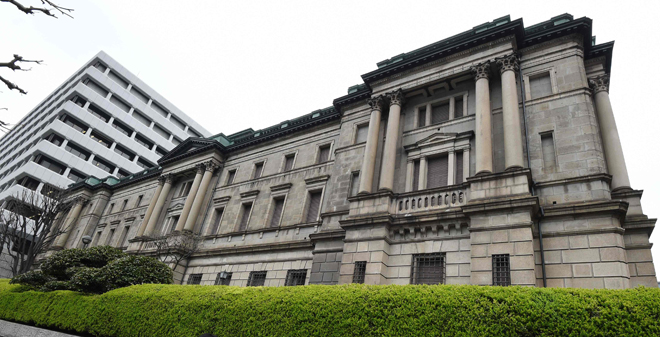BOJ Could Face Monetary Policy Dilemma in 2019
January 2, 2019
Tokyo--The Japanese economy headed into 2019 amid increasing concerns over a global slowdown stemming partly from U.S.-China trade friction, possibly placing the Bank of Japan in a monetary policy dilemma.
Following global financial market turmoil in late 2018, hopes may spread for additional monetary easing by the BOJ to prevent deceleration of the domestic economy, which is believed to have matched the post-World War II record growth run of six years and a month, from February 2002 and February 2008.
"The global economy has already entered a slowdown phase," Takashi Miwa, chief economist at Nomura Securities Co., said.
Furthermore, the Japanese government is slated to raise the consumption tax rate from the current 8 pct to 10 pct in October 2029, which may dampen consumer spending.
The BOJ "could be pressed to loosen monetary policy further," a former BOJ official said.
Meanwhile, the side effects of its current massive easing policy are increasingly visible, particularly damaging to earnings at regional banks, which are struggling with a low interest environment.
BOJ Governor Haruhiko Kuroda, in a speech on Wednesday, described the current economic situation as "somewhat complicated," calling for "further attention" to downside risks for overseas economies.
In July 2018, the BOJ revised the easing policy framework to allow greater fluctuations in long-term Japanese government bond yields, in a bid to reduce its adverse effects.
In the latest speech, Kuroda stressed that the central bank is watching the demerits of the easing policy.
However, it seems difficult for the BOJ to embark on a path of monetary policy normalization to remove the negative easing effects. The removal of negative interest rates, part of the easing policy, could lead to a narrowing of Japanese-U.S. interest gaps and a sharp rise of the yen against the dollar, market sources said.
There are also concerns that even if the BOJ finds it necessary to take additional easing steps, the central bank would have only limited room for further action, given its current large-scale easing policy. Jiji Press
Latest Videos
- THE UNTOLD STORY EXPERT INSIGHTS INTO THE UKRAINE
- NEGOTIATING A NEW ORDER US RUSSIA TALKS ON UKRAIN
- Ukraine: A Pawn in the Geopolitical Game? Will Trump Intervene?
- US VP VANCE CRITICIZES EUROPEAN DEMOCRACIES AT MUNICH SECURITY CONFERENCE
- UNCOVERING THE WEB OF DECEIT: CIA INFILTRATION OF THE MEDIA
- SHIFTING SANDS: TULSI GABBARD’S CONFIRMATION AND THE EVOLVING GLOBAL LANDSCAPE
- FAUCI SCANDAL: A THREAT TO GLOBAL HEALTH AND DEMOCRACY






